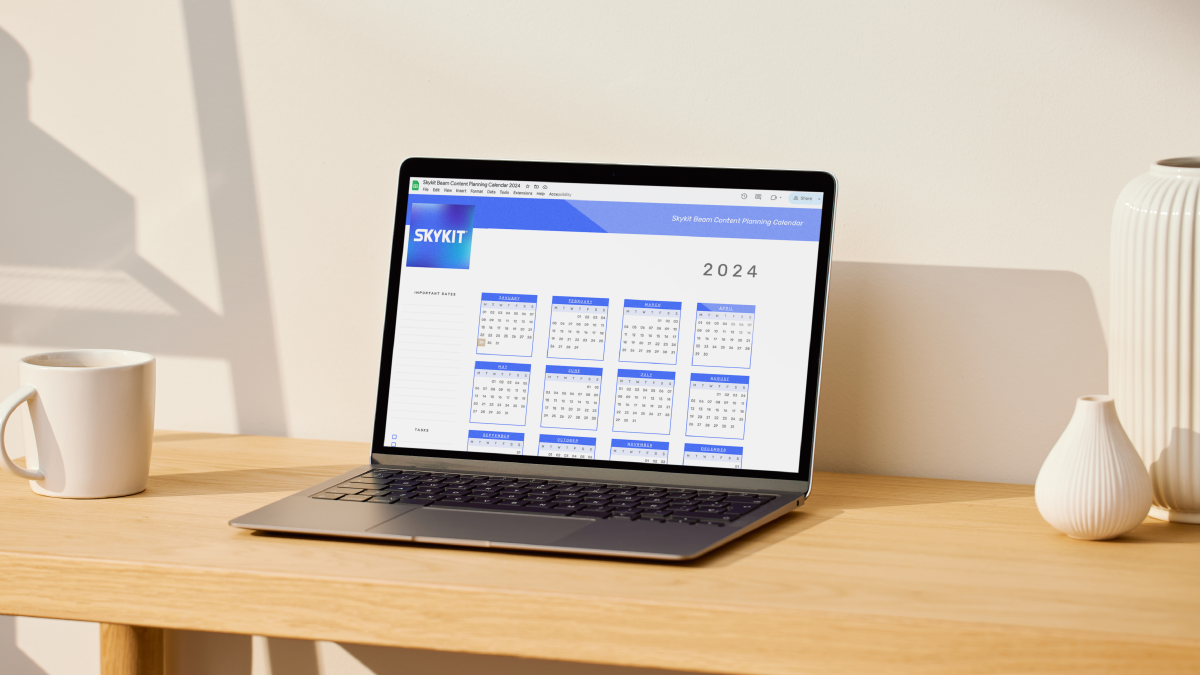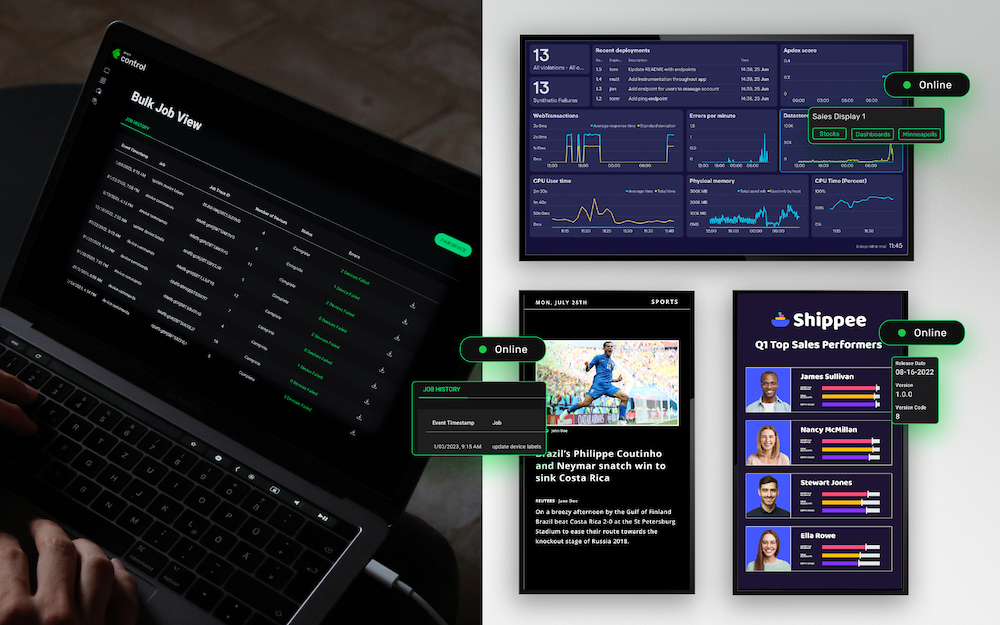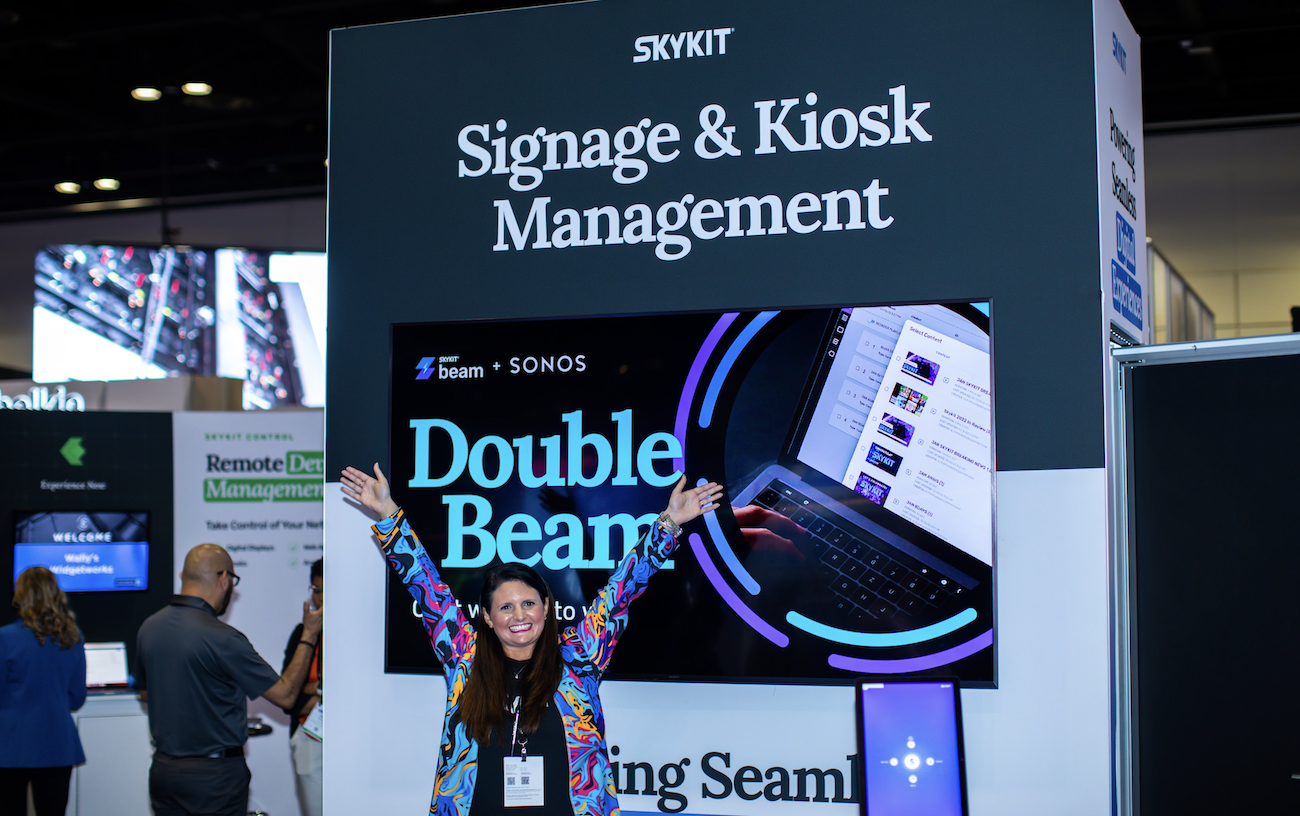Quantum mechanics says that we, as energetic human beings, are all connected. These connections are about to get a whole lot bigger.
Simply put, IoT is the idea of connecting any device equipped with an on/off switch to the Internet. These devices (phones, commercial ovens, restaurant kiosks, digital signs, computers, oil rigs, etc.) communicate with one another, leaving out the middleman and streamlining the entire process.
With broadband Internet becoming more widely available, the cost of connecting is decreasing, and more devices have Wi-Fi ability built right into them.
That includes digital signage. But why all the connections?
Why do we need our smartphones talking to commercial ovens?
To oil rigs in the middle of the ocean?
To digital signs smack dab in the center of Times Square?
Because we can. And because we want to. And because it’s the way advanced technology is headed.
Let’s look at a handful of industries where digital signage meets IoT, and how it’s changing the face of those industries.
1. In Healthcare
According to a report published by GrandViewResearch, the global healthcare Internet of Things market segment is poised to hit $534.3 billion by 2025.
That’s staggering. The ways in which IoT will be streamlined in healthcare with digital messaging can’t be counted. Every day, new ideas and concepts are created. And every day, lives are being simplified because of it.
As far as patient care, patient records can talk to digital signs in hospital lobbies. When a patient arrives for an appointment, they can enter their name or ID number on a welcoming digital screen, prompting a wayfinding map to help them find their destination. A patient’s experience can also be more personalized.
With handheld devices talking to monitors, which talk to computers that talk to doctors and nurses, a patient coming in for an extended stay will feel at home when everyone that takes care of them can address them by name without shuffling papers.
Perhaps their favorite TV channels are already programmed for them, and meal preferences are in place with the cafeteria downstairs. With the touch of a button on an interactive screen, the patient can order their meal without ever calling a nurse.
Digital signage in its many forms can serve the healthcare industry in ways we haven’t even begun to imagine.
2. In Retail
Retail stores have been gobbling up digital signage and using it in remarkable ways. From sales to product tracking to interactive customer engagement, handheld devices and large screens are opening doors for retailers everywhere.
Efficient data collection is a goal for many stores. Retailers can grow more when the information they need is readily available.
IDC, a global industry analyst, predicts worldwide IoT spending to reach $745 billion in 2019. One IoT use case that is expected to deliver the fastest spending growth is in-store contextualized marketing (retail). Leading this increased demand is digital signage, as retail stores seek new ways to keep their cash registers full.
A great example of this comes from retail giant Walmart. The company uses data to gain customer insights, monitoring social media movement to discover which products and widgets are the most sought after.
They also track weather trends and compare those trends with historical sales periods to determine when to boost prices on popular products. For example, watermelon sales may go up when the weather hits 80 degrees.
Armed with this knowledge, the retailer can prepare by ordering stock before the trend hits, and then price it accordingly.
3. In Restaurants
The restaurant industry is showing clear initiative in merging digital signage with IoT. When it comes to inventory and safe food supply, The Food Safety Modernization Act dictates monitoring and record-keeping for restaurants and other food suppliers.
To maintain this remotely, refrigerators, ovens, and other temperature-gauging equipment are connected wirelessly to report real-time temperatures to management on the other end. For example, the supervisor of a series of franchises can remotely monitor oven temperatures so cooking remains efficient and product quality is not compromised.
As far as customer integration, ordering kiosks are all the rage right now. From stores like Panera to McDonald’s, ordering from one digital product that speaks to another makes the ordering process faster and easier for both the consumer and the establishment.
Let’s not forget tabletop kiosks. They provide the same level of service as the fast-food kiosks, only you get to sit down when you order. The kiosks offer a handful of interactive games, too, to help pass the time while you wait.
Restaurants also integrate information like weather, demographics, and loyalty data. All of this collected data can determine what the best time is to promote a product and which products to upsell.
4. In Transportation
The transportation industry is in the business of moving things. In the air and on the ground, people, cargo, merchandise, and other valuable items need to make it from one place to another safely, securely, and on time.
Digital signage contributes to the success of these transports. Mobile devices like barcode scanners and mobile computers have become a huge part of day-to-day operations in the industry. Many transportation companies are reaching new levels of accuracy with shipping and receiving, thanks to these digital devices. Retail inventory is also more accurate, and the ordering process from consumers is faster.
As far as the vehicles we drive, digital signage has been playing a role since 2010 when vehicles began to hit car lots equipped with satellite radio, streaming video, and smartphone apps. Cameras installed on the dashboard of vehicles to aid us in backing up safely were also introduced. The cameras proved so effective that The National Highway Safety Transportation Agency (NHTSA) announced that all new cars built as of May 1, 2018, need to have one. Connected cars can improve the driving experience and provide a safer ride. With IoT connectivity, some electrical components can be updated in the cloud, saving car owners a visit to the dealer. GPS maps are updated in real-time as well. And predictive maintenance alerts ensure that we remember to get the oil changed and add air to our tires.
5. In Education
Schools have been integrating digital signage into their curricula for some time now. From wayfinding maps to class schedules, college campuses all over the world are helping students and faculty manage their days with the help of digital data.
The issue of school security is a major concern as mass shootings continue to rock campuses across the U.S. To keep students safe during a life-threatening situation communication is key, and every second counts. From a single device, emergency alerts can be sent to students and faculty via smartphones as well as onto all digital signs on campus.
In addition, levers or buttons placed strategically throughout the campus enable a witness to alert authorities and initiate a lockdown. The lockdown can automate perimeter security, alert special needs students via digital signage, and transmit video from those same monitors to the police so intruder activity can be thwarted.
In addition to student safety, IoT can make mobile learning a cinch. Schools and universities are fast adapting to the idea of using IoT to measure and share data, link directly to the curriculum, and create the next wave of learning for incoming students.
It’s a tremendous advancement, as fully integrating to digital content means easier sharing and more collaboration among teachers. They can also save time, as working on digital displays is faster than writing on a chalkboard or whiteboard.
6. In the Gas and Oil Industry
The oil and gas industry is no stranger to digital technology. Right now, managing refineries remotely from a safe location is a priority. Monitoring equipment on oil rigs and using data to improve efficiency is a challenge for the industry, but not one that can’t be met.
Rockwell Automation is taking on that challenge. The industrial automation company wanted to integrate a cloud-based solution that could help the industry track performance, be alerted to equipment failures, and find innovative solutions to prevent any failures in the future.
They were successful. With sensor-embedded equipment and related applications, Rockwell streamlined an IoT solution and is still working on ways to improve communications with truck drivers, rig workers, and senior management to keep the oil pipeline running.
Conclusion
The Internet of Things is a big deal, and it’s only going to get bigger.
Of all the emerging technological advancements, IoT will offer the most opportunities over the next decade. And with digital signage evolving every day, there’s no question it will be at the forefront of the movement.
How? Digital signage already interacts with all sorts of other technological devices. The industry, software, and hardware are changing every day. Before we know it, the world will be streamlined in such a way that the words ‘lack of information’ will be impossible to say.
No worries, though. We’ll be with you every step of the way.
Consider how your industry benefits from IoT now. How is your digital signage integrated? How can it be better integrated?
Last updated: 12/06/19



